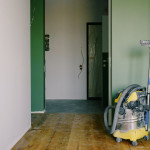Not only is mold unsightly, but it also compromises the structural integrity of your home and is detrimental to your health.
For this reason, mold insurance is usually included in homeowners' policies. Most home insurance policies cover mold damage, but not if the mold is preventable. Only "covered hazards" or sudden/unexpected events that cause mold are eligible for mold remediation.
The dangerous situations covered are:
- Weather related (snow, thunder, fire, ice)
- vandalism or theft
- Frozen pipes (within reason)
- Accidental leaks or drains from air conditioners, water tanks, appliances, etc.
In the event of an unforeseen hazard, such as a pipe bursting, insurance will pay for mold removal. However, mold repair is expensive, so insurance may only partially cover the cost of the repair, even if the accident is covered. It is not uncommon for insurance companies to limit the total amount payable. Therefore, we recommend calling your provider if you are unsure of your coverage.
The insurance company's stance on mold is that it's your responsibility to fix a leaky roof if it's preventable, such as replacing a 45-year-old shingles.
Is Mold Insurance Worth It?
If your home insurance coverage does not include mold, you can add a mold tab to your policy. Risk level determines eligibility and cost.
Older homes, damp conditions, or previous mold damage drive up the price. The average annual cost of form verification ranges from $500 to $1500.
Signs of mold growth
The best prevention is to recognize the early signs of mold. Stopping mold growth early can make repairs more manageable.
These are the signs of mold to look out for.
Musty smell:
Mold is known for its musty smell of rotting leaves. So if you suddenly notice a musty smell in your home, it's time to investigate. Please try to identify the exact location. If you can't find it, call our mold research team to find it.
You see mold:
Whether you see or feel mold, the next step is to determine how widespread it is. Mold can grow in poorly ventilated areas (basements) or damp areas (bathrooms).
Mold related diseases:
Even if mold isn't noticeable, it can affect your family's health, so be on the lookout for cold-like symptoms. Sore throat, asthma, runny nose, itchy skin and eyes, sneezing and coughing. To determine if it's mold, you'll find that symptoms get worse if you stay home longer (weekdays and weekends) or if you're "sick" for a long time.
How do I submit a mold claim?
If you notice mold, first stop the leak (if any) and then contact your insurance company. Photograph any mold issues throughout the process (before, during, and after repair). don't forget
Mildew insurance is 'covered hazards' only, so if you encounter an unexpected hazard (such as a burst pipe) and notify your insurance company immediately:
Tackle two problems at once.
If the pipe bursts, the insurance company will repair the unexpected damage and the mold restoration team will be on hand to prevent mold growth.
Payment of only one deductible:
Since the insurance covers two issues at once, you only have to pay one deductible. In the event of an accident, stop the leak safely if possible, then blot up any unwanted water with a damp vacuum or mop. Don't forget to shoot everything. While in the hot water, it's a good idea to remove any plush items, such as carpets, which are breeding grounds for mold, and open the windows to allow the room to dry.
What if I have mildew?
Living in an older home with old fixtures (such as plumbing) or existing mold claims is considered unsafe by insurance companies. Anything deemed risky means you'll pay a higher premium for coverage, or you won't be eligible for coverage, so you're better off removing the current mold yourself.
Preventing Mold Growth
If you don't want mold, stay on top of regular house maintenance to reduce your risk of unexpected incidents, more so if you live in states prone to mold like Florida.
To keep your house free of mold, regularly clean, install proper vents, and maintain good indoor humidity (using a dehumidifier when necessary).
Some other ways you can prevent mold are:
- Maintaining indoor humidity (30-60%)
- Having working exhaust fans in bathrooms and kitchens
- Ripping up the carpeting in damp areas like the basement or bathroom and installing non-porous flooring/tile
- Keeping an eye out for mold beneath the sinks, in crawl spaces or laundry rooms
- Every couple of years, replacing laundry or dishwasher hoses
- Making sure houseplants don't have water beneath their pots
- Regularly bleaching your bathroom
- Cleaning the gutters often
- By simply cleaning, maintaining, replacing, and constantly checking for mold, you're saving yourself thousands in the long-run, so it's well worth your time and effort.
Mold Insurance:
Are You Sufficiently Covered? Even if you don't think about mold, you still want to protect yourself from mold just in case. In addition to this, you also need to maintain your home regularly and check for signs of mold to protect yourself from hefty mold repair bills.









